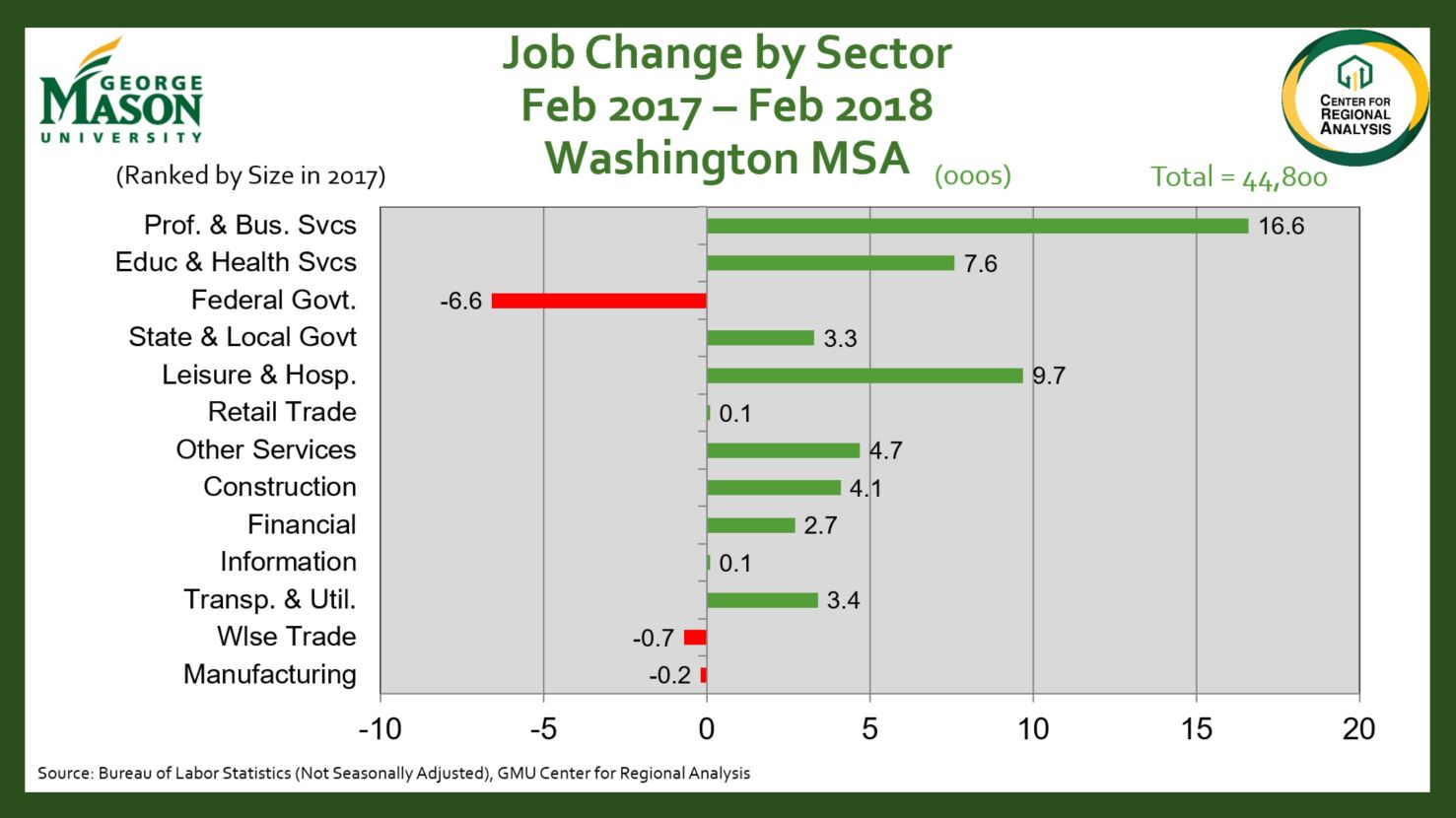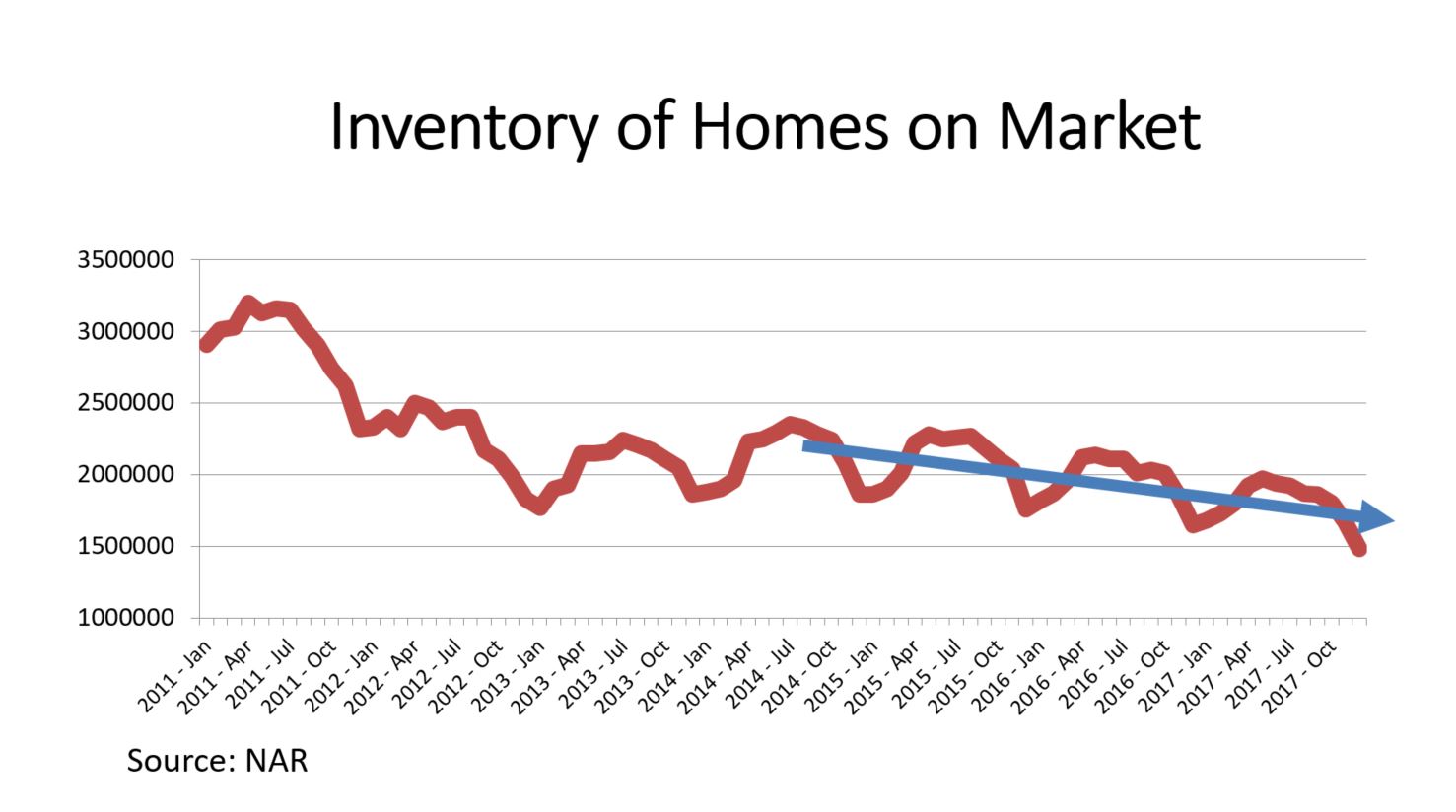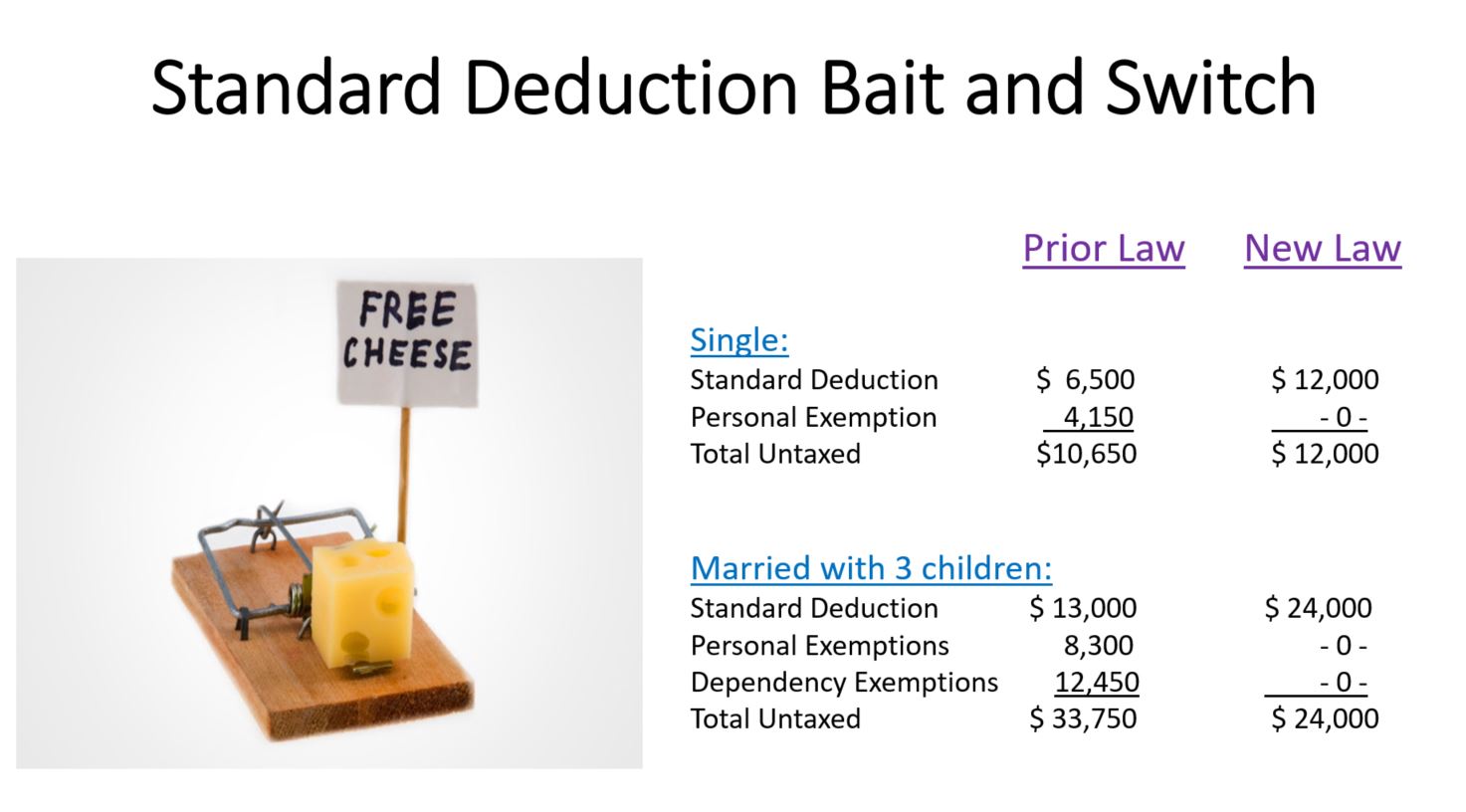AT NVAR’S APRIL 4 Market and Legislative Briefing, experts explained how state legislation, federal tax reform, and local and national economic factors impact the real estate industry.
THE LOCAL REGION – EMPLOYMENT AND POPULATION
Dr. Terry Clower, director of the George Mason University Center for Regional Analysis, opened the annual briefing at NVAR’s Fairfax headquarters with a discussion of the local market.
According to Clower, job growth has continued in the Washington, D.C. region but slowed compared to 2016 and the first half of 2017. He said that certain factors, such as uncertainty surrounding the recently-passed federal budget, could explain this trend.
“We had a little bit of an uptick in January and February, but really, things are moving at a little bit of a slower pace and that’s creating some concern,” Clower said.
The largest employment sector in the region, Clower reported, is Professional and Business Services – making up roughly 752,000 jobs, or almost a quarter of our total employment base. This sector includes government procurement services, such as contractors, and a wide range of other fields, including cyber security. He noted that the federal government job sector lost 6,600 jobs from 2017 to 2018, which was the highest loss of all the job sectors.

From 2016-2017, our region had 21,543 more residents leave the region than move in. Although this can partially be attributed to retirees, Clower said most of these residents are millennials moving elsewhere for a more suitable lifestyle based on their income.
For the D.C. region, net international migration was the largest source of population growth in 2017 at about 45,000 people.
Addressing Amazon’s second headquarters location, Clower said he is uncertain what the outcome will be.
“The point of the matter is that we have a good chance. But what I want you to think about is, if Amazon was going to hire 50,000 workers over a four- or five-year period, where is the housing inventory going to come from?” he said.
THE NATIONAL MARKET – STATS AND A FORECAST AHEAD
Ken Wingert, senior legislative representative for the National Association of Realtors®, explained that NAR has predicted national new home sales for 2018 will be at 700,000 – about 100,000 more than 2017. NAR also forecasted that existing home sales for 2018 will stay flat at 5.6 million, and price growth will be a little less than last year at 4 percent.
Although homes continue to be built, they aren’t constructed fast enough. The U.S. has about a three-month supply of new homes, whereas the ideal equilibrium is six months, Wingert explained.

“A lot of different factors are going into this,” Wingert said. “Interest rates; we’re not building more; we’ve got more folks coming into the market; as the economy improves, those that were living in mom and dad’s basement are now going out and wanting to form families and buy, which is putting pressure on supply and demand.”
Another trend Wingert discussed is an increase in the length of time people are staying in their homes. In the 1980s, the average number of years in a home was five, and now it is 10 years.
TAX REFORM – WHAT CHANGED?
Wingert discussed the Tax Cuts and Jobs Act and related implications for the market and real estate professionals.
“The bottom line is that about 90 percent of taxpayers overall are going to see some sort of tax cut,” Wingert said. “We can argue over what the size of that is; how much that’s going to impact their daily budgets; how much that’s going to impact their decision not to buy a house. But, there are going to be tax cuts and more money in people’s pockets to go into the economy, which arguably, will have some sort of effect.”
As part of the new tax law, personal exemptions were eliminated and the standard deduction was doubled. In addition, in an effort to accommodate for the loss of personal exemptions, the child tax credit doubled to $2,000 per dependent child until age 17.

According to Wingert, NAR was opposed to the initial bill, which reduced the $1 million Mortgage Interest Deduction (MID) cap to $500,000, eliminated deductions for second homes, and eliminated the deduction for home equity loans. After extensive lobbying efforts, the final law limits the MID to $750,000, preserves the deduction for second homes, and ensures that home equity loans can still be deducted if the money is being used to improve the home.
Another provision of the new law states that State and Local Tax (SALT) deductions are limited to $10,000 per tax return, regardless of whether the taxpayer is married or single.
“Given what property taxes and property values are in the Northern Virginia region, this is the one that really hurts and where I think our next step in lobbying is going to be: can we make this doubled if you’re married? Can we index this for inflation because as prices go up, taxes go up?” Wingert said.
The elimination of personal exemptions will likely cause fewer people to itemize, Wingert said, which could diminish the incentive of MID and SALT deductions for buying a home and negatively affect residential real estate.
In order to claim the capital gains tax exclusion, prior tax law stated that a person must own and live in a home for at least two of the five years before the sale. The original bill changed the required time for exclusion to five out of the past eight years in the home, but after lobbying efforts, the prior law was retained.
A provision that affects real estate professionals directly is the Qualified Business Income deduction. This allows for the deduction of 20 percent of the business income earned by pass- through businesses, but with certain conditions.
“Some of this is going to be interpreted by Treasury and IRS, and that’s what we’re working on now: to make sure that this deduction that we fought for, you’re able to claim as we think you should be entitled to,” Wingert said.
In addition, entertainment is no longer deductible as a business expense. For example, if you bought Nationals tickets and handed them out to your clients, that would no longer be tax deductible.
As the new tax law takes effect, Wingert recommended that Realtors® speak with their accountants to determine what they are able to deduct.
THE FINAL VERDICT – VIRGINIA LEGISLATIVE UPDATES
The Virginia General Assembly meets annually, beginning on the second Wednesday in January. This year’s session, which was 60 days long, adjourned without a budget agreement and with a vote to re-open on April 11 for a special session.
Mary Beth Coya, NVAR senior vice president of public and government affairs, and Josh Veverka, NVAR government affairs director, gave an update of legislation following this year’s General Assembly session. An explanation about the bills passed can be found on
NVAR.com.
To watch the Market and Legislative Briefing video, please visit
facebook.com/nvar.realestate.